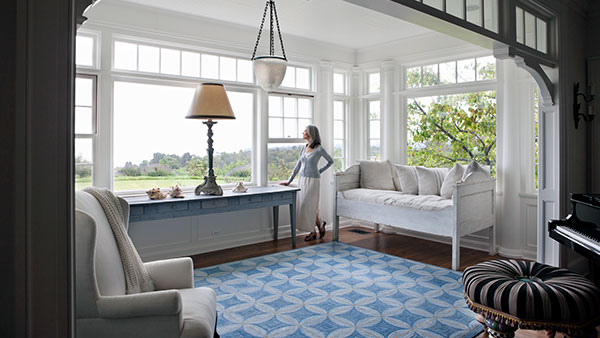
Consider unique features when establishing the insured value of your home.
When you’re buying homeowner insurance, how do you determine the replacement cost of your home? Many homeowners automatically base the replacement cost on the current market value. But that method could leave you with unpleasant surprises if you have a loss.
Your insurance agent can use cost estimator tools to complete a value for you. Here are some questions you can answer that will help your agent determine the most accurate suggested value for your home:
- Was your home built in 1944 or earlier? Let your agent know if there is a registry plate or plaque on the home or if the home is in a recognized historic district.
- Have you completed any renovations on the home? Provide date completed, details of renovations and costs.
- What is the square footage of the total living area? Share your bank appraisal or prior inspection report with the agent. If you don’t have a report, your agent can check your county tax card for square footage.
- What type of foundation is under your home? Is it slab, crawl space or basement? If basement, is it a walk-out? What percentage is finished?
- Do you have a garage attached to the home? If yes, how may cars can it hold?
- Do you have any additional spaces? Include any half story, three-quarter story, screened or covered/enclosed porches, deck, outdoor kitchen or any other attached structures.
- What are the exterior features of the home? Consider roof material (shingle, concrete tile, slate); primary exterior wall covering (brick, vinyl siding, wood frame); and style of home (ranch, bi-level, colonial)
- What are the interior features? Don’t overlook:
- Window styles and brand (casement, double slide, transom)
- Floor coverings (wood, carpet, tile)
- Ceiling construction (standard, coffered, beamed, vaulted)
- Wall trim (crown molding, pilasters, custom molding, arched doorways)
- Kitchen cabinetry, countertops, backsplashes, high-end or luxury brand appliances
- Bathroom cabinetry, countertops, flooring
- Any rooms with built-in cabinetry
- Number of fireplaces
- Miscellaneous items (wet bar, ceiling fans, solar panels, walk-in closets, wine cellar)
- Unique items
By providing as much detail as you can – along with any photos or videos of the home – your insurance agent should be able to give you a good starting replacement value.
Once your policy is issued, many insurance companies will have a home valuation expert conduct an inspection as a complimentary service to confirm accuracy and to document your home features. This gives you added comfort that your home is insured to value.
Finally, be sure to periodically review your homeowner policy to make sure your replacement cost coverage is still adequate, especially if you do any major renovations.
This loss control information is advisory only. The author assumes no responsibility for management or control of loss control activities. Not all exposures are identified in this article. Visit your local, independent agent for insurance coverage information and advice.
